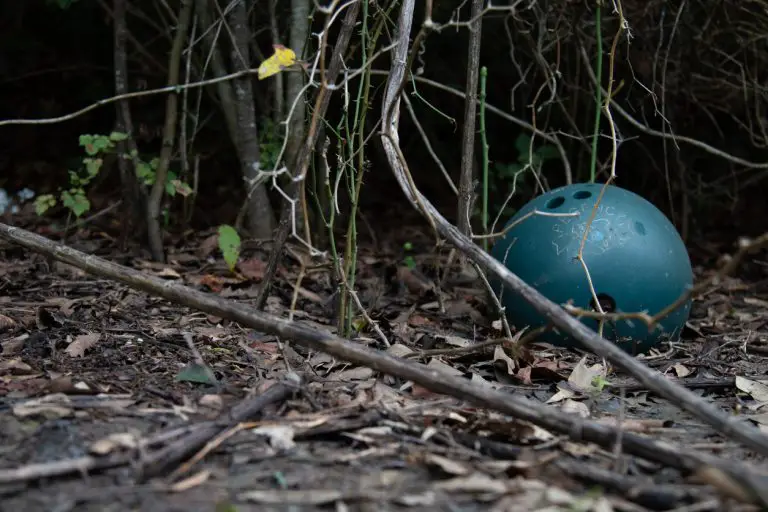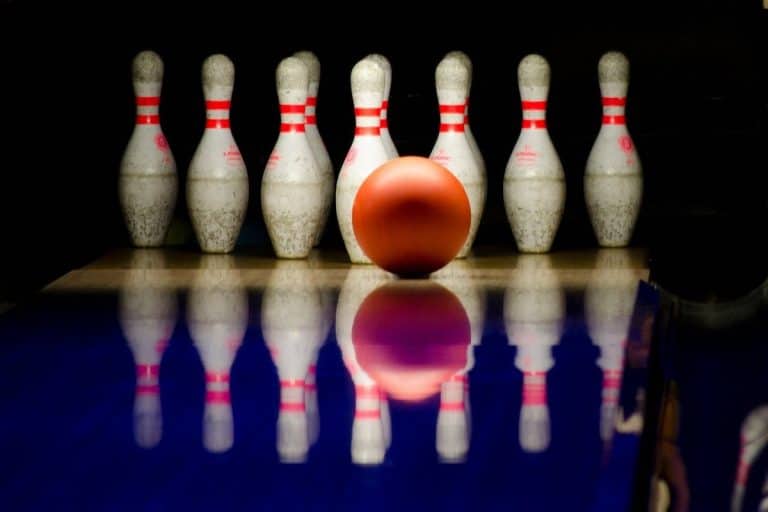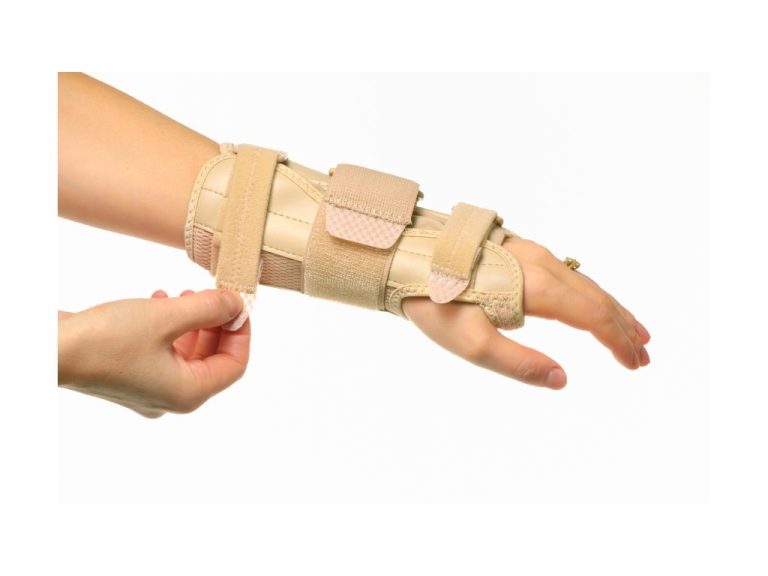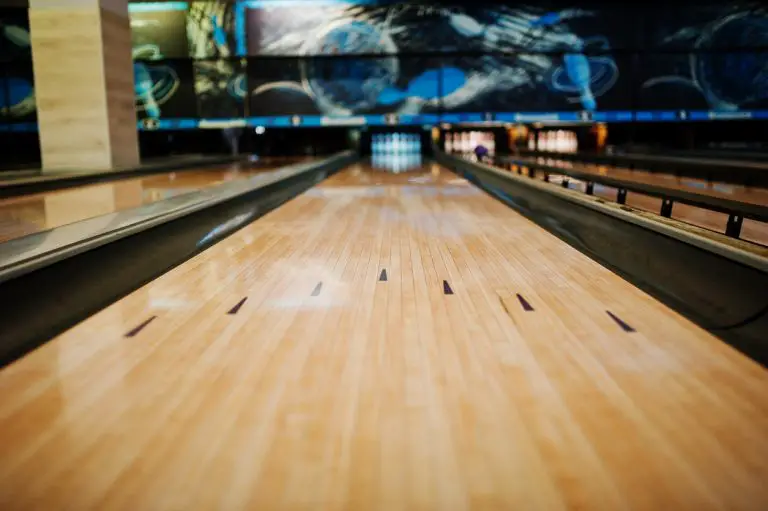Ways to Bleed a Bowling Ball Explained
Every so often, your bowling ball will start to feel a bit oily and greasy to the touch. This is due to the ball pickup up oil from the lanes during use. When the ball feels like this, it will be inconsistent in movement as the oil will affect the surface and core.
Bleeding the ball is a term used to describe cleaning the ball and removing the oil from within and on the surface. You can do this by hand, using washing machine, heating up the ball, or with a simple bucket of water. This is done to restore its grip and feel to a better state.
There are a few ways to clean or bleed your ball correctly without risking damage to the ball or the resin and outer shell. Following these will result in your ball lasting longer and providing years of excellent bowling!
Why do you need to bleed the ball in the first place?
Your hooking urethane ball will show less curve over time because it collects oil from the lane during play. This will make it feel greasy, smooth, and less tacky in your hands, resulting in less ‘bite’ on the lane resulting in less curve and control.
This will affect your ability to control the ball and deliver the curve shots you need to bowl your perfect game! When this happens, it’s time to bleed the ball.
A word of caution here.
The following methods involve using heat as part of the process to remove the oil. Please note that a temperature over 140F could damage the shell or the resin, making the ball brittle and prone to damage or cracking.
Ensure you consult your ball’s manufacturer regarding temperature limits for your specific model before attempting to bleed it.
Can Heating The Ball Cause It To Crack?
The consensus on this is varied, but the overall opinion is that applying heat under the recommended maximum temperature of 140F is unlikely to cause the ball to crack – unless it was going to do so already.
Most pro shops use a machine that does apply heat, whether in water or air and if cracking were a consistent result with this application, the method would have been changed by now.
Many players have successfully and repeatedly bled their balls using heat with no damage, and some players that have never bled the ball see the ball crack!
Cleaning during play.
A simple and easy way to reduce oil build-up on your ball is to wipe it and your hands after every throw. The oil from the lane will also get onto your hands, so even if you wipe the ball, your hands will still leave a light oil residue on the ball.
Use a clean, lint-free microfiber cloth and ONLY use it for cleaning your ball. This material will protect the finish on the ball, and the lint-free element will remove threads and other materials that could stick to your ball, influencing your throw.
Use the cloth between each throw to wipe the ball down and if you are involved in a long game, consider changing cloths halfway through.
Using Isopropyl alcohol to wipe the ball after play
As soon as you are finished playing, take a dab of rubbing alcohol and wipe the ball down. After play, the ball will be warmer, opening the pores on the surface, allowing for deeper and better cleaning. Alcohol goes a long way, so you don’t require a lot to clean the ball effectively.
Regular cleaning of your ball will also go a long way to prolonging its condition and lifespan.
After cleaning, take a dry cloth and wipe the ball properly to remove any excess moisture left on the ball.
Rubbing alcohol while good for killing viruses and bacteria on your ball may result in the surface becoming dry and brittle over time. This is true for the reactive balls as urethane and plastic do not have pores.
Some specialized products for reactive balls are available, such as So Fresh and So Clean, a specially-designed bowling ball life extender that works with a 70% isopropyl alcohol product.
When is it time to bleed your ball?
This will depend on the number of games played, how often you play, and the oil conditions of the lanes you play on. With oily lanes, you may need to have your ball bled every 50 games or so. With lanes that have a light oil coating, this may extend to 70 or even 100 games.
The rule of thumb is that it’s time to bleed the ball when you can discern a difference in performance.
How to Deep Clean your Ball at Home.
For this method, you will need waterproof tape and a bucket of hot water.
- Use the tape to cover the finger holes to stop water from going into them. Then fill the bucket with hot water and soak the ball in the bucket – remember the 140F degree limit. To effectively remove the oil, you will need to soak the ball for at least 20 minutes.
- As oil is lighter than water, the oil will float to the top in the bucket.
- After 20 minutes, take the ball out but do not remove the tape as water may still fall into the holes while drying. Using your dry, clean, lint-free towel or cloth, wipe the ball down thoroughly before removing the waterproof tape.
- After taking the tape off, dry the ball again to make sure ALL moisture is off.
Cleaning your ball in a hot bath or bucket.
One of the best ways to bleed your ball is to do it in a hot bath or bucket. If you’re using a bucket, make sure it’s deep enough to submerge the ball completely. The only drawback to this method is that it is time-consuming, and your ball may only be ready to use in a day or two after cleaning.
- Fill your bath with hot water (remember the 140F limit) enough to be able to submerge the ball. They put the ball in the tub and let it soak for about 15 minutes. Then take it out and dry it.
- Once completely dry, put the ball back in the water, submerge it again, and repeat the drying process. You may need to do this 3 or 4 times before you feel the ball is entirely clean.
- When you take it out for the last time, and it feels tacky again, your job is done! Now let the ball dry for one or two days, and you’re good to go!
The dishwasher method
Yes, the dishwasher!
While not the most common or popular method, it is adequate to remove the oil.
No doubt you may get some strange looks from your better half when you tell them you want to use the dishwasher to clean your bowling ball!
- Ensure that your dishwasher has a setting that allows it to operate below 140F or risk damaging your ball.
- Turn off the heat/dry cycle as uneven heating will likely cause the ball to crack.
- Use tape to block the holes in the sink. It’s unlikely that your ball will fit on top of the sink, so place it on the bottom rack. You could put some soap in, but this is unnecessary as the agitation and hot water will do fine.
- After a while, turn off the heat in the machine and let the ball cool down. Let the ball dry for at least 24 hours before using it to make it is completely dry.
Using YOUR CAR to remove the oil!
Yes, your CAR can also be used to remove oil from your ball. During the day, in hot conditions, your car interior can get pretty warm.
- Place your ball on a dry clean microfiber cloth on the floor of the car.
- Close all the windows and doors and wait until you see the ball become glossy as the temperature rises.
- When you can see that enough oil has accumulated on the surface, take the ball out and wipe it down.
- Then repeat the process until there is no more oil coming off the ball.
- At that point, the ball should feel tacky again.
The advantage of this method is that once the ball is finally clean, you can go ahead and use it!
The Hair Dryer method
- Place the ball on the clean, dry microfiber cloth.
- Wave the hairdryer back and forth over the ball as if you were drying your hair.
- Rotate the ball constantly to avoid uneven heating.
- As the oil is released, you will see the surface get glossy.
- Wipe the ball down thoroughly and repeat the process.
- When no more oil is released, dry the ball again and let it sit for a few hours to cool off.
With this method, you can use the ball once it has dried off and cooled down.
Baking the ball dry in your oven
Most ovens have a minimum temperature of 170F, and this means that if you are going to use this method, you need to be keeping a constant eye to avoid risking damage to your ball.
- Place the first wire rack as far from the heating element as you can, but leaving enough room for the ball.
- Place the second rack directly under the first and place a cookie sheet on the rack.
- Using the sheet blocks some of the heat from the element.
- Create a kind of ‘bed’ by placing two microfiber towels next to each other at right angles to the rack.
- Place the ball on the towels and close the oven door.
- Turn the oven on its lowest setting.
- Rotate the ball every two minutes or so to ensure even heating and wipe it with paper towels.
- The opening of the oven will also help reduce the heat inside
- Keep rotating and wiping the ball until no more oil is released.
- Clean the ball thoroughly and place it back in the oven to cool down for an hour or so.
- Then remove the ball once cool and clean it as usual.
Using a Heater
As a method, it takes very long and is quite tough to do correctly.
- Wrap the ball in a towel and place it in front of the heater.
- Rotate the ball constantly to ensure even heating.
- As the oil builds up, wipe it off and continue to heat it until the shell has stopped releasing oil.
- Wipe the ball properly and let it cool down.
Taking your ball to the pro shop
If you don’t want to bleed your ball at home or don’t have the time, taking your ball(s) down to your local pro shop is the next best option.
They have proper baking machines that use either hot air or water and constantly rotate the ball to ensure thorough cleaning. While this may cost you over the lifetime of your ball, it certainly gives you peace of mind that your ball will be adequately cleaned, and there is minimal risk of damage.
In addition, the pro may be able to identify damage to the ball that you may not have noticed.
The very best method of home cleaning your ball
Finally, we get to the ultimate method of bleeding your strike balls, and that is to invest in one of the ball cleaning systems available from pro shops.
These units are designed specifically to bleed the ball and remove the oil with zero risks to your ball and extend the life of your balls as well.
One of the simplest and cheapest machines is the NuBall Bowling Ball Rejuvenator. Blowing temperature-controlled air over the ball and has a specially designed drip tray to catch the oil droppings.
Setting the machine to 135F and placing the ball in the oven is all you need to do.
While some may consider this an unnecessary expense considering the much cheaper home methods discussed in this article, this machine would pay for itself a few times over the lifetime of the ball.
A pro shop would charge about $20 to clean your ball using a similar machine, and if you are a serious bowler or considering becoming one, this is a consideration. Saving $20 over ten or more years of bowling would see the investment pay itself off quickly, and you would have peace of mind when using it.
Any of the above methods will work on bleeding your ball as long as you monitor the ball constantly and make sure you don’t exceed the temperature limits.
Consultation with your pro or ball manufacturer should be your first port of call when either buying a new ball or looking to bleed your existing strike balls.
The reality is that as long as you play the game, your ball will collect and accumulate oil, and at some point, this will affect the performance on the lane and the feel in your hand.
With all the options on offer here, there should never be any reason your strike or spare balls shouldn’t be in top condition whenever you play.
Happy Bowling!






